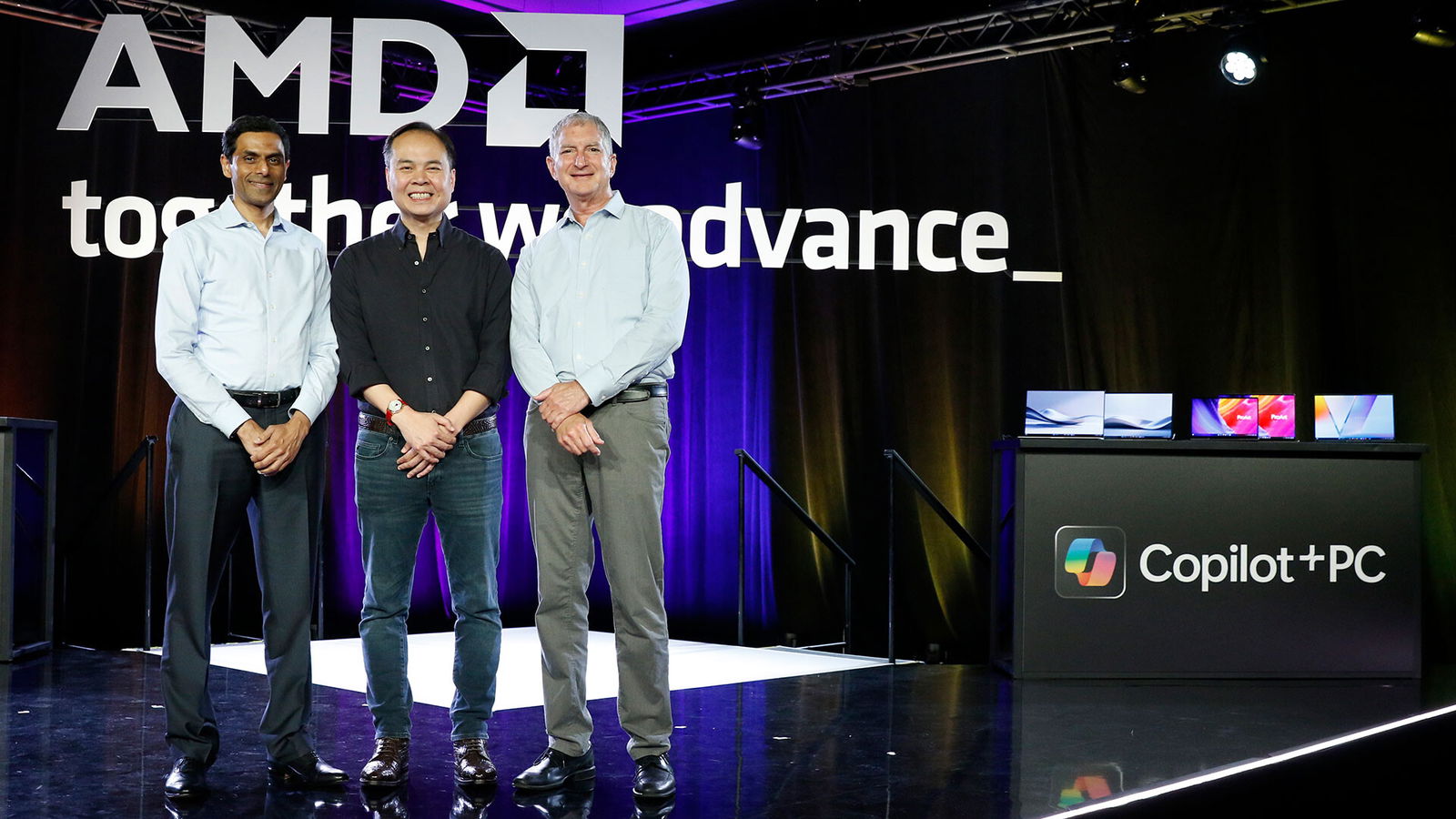With the first Copilot+ PCs now here and the race for the best mobile AI offering only heating up, AMD took the time to show off what was possible on their new Ryzen AI 300 range of laptop CPUs. With AI being the latest buzzword the computer industry is pushing at every turn, it only makes sense AMD would showcase the potential of their latest laptop CPU range, the Ryzen AI 300.
Built to take advantage of a range of new workflows and building upon their previous CPUs that featured NPUs built onto the main SoC, Ryzen AI 300 offers up a notable improvement. These chips aim to deliver an impressively performant and efficient X86 processor ready to take on Intel and Qualcomm for people looking to buy a new thin and light laptop in 2024. With improvements across the board compared to last year’s chips, Ryzen AI 300 offers some impressive specs, even compared to what Intel and Qualcomm currently have on the market.
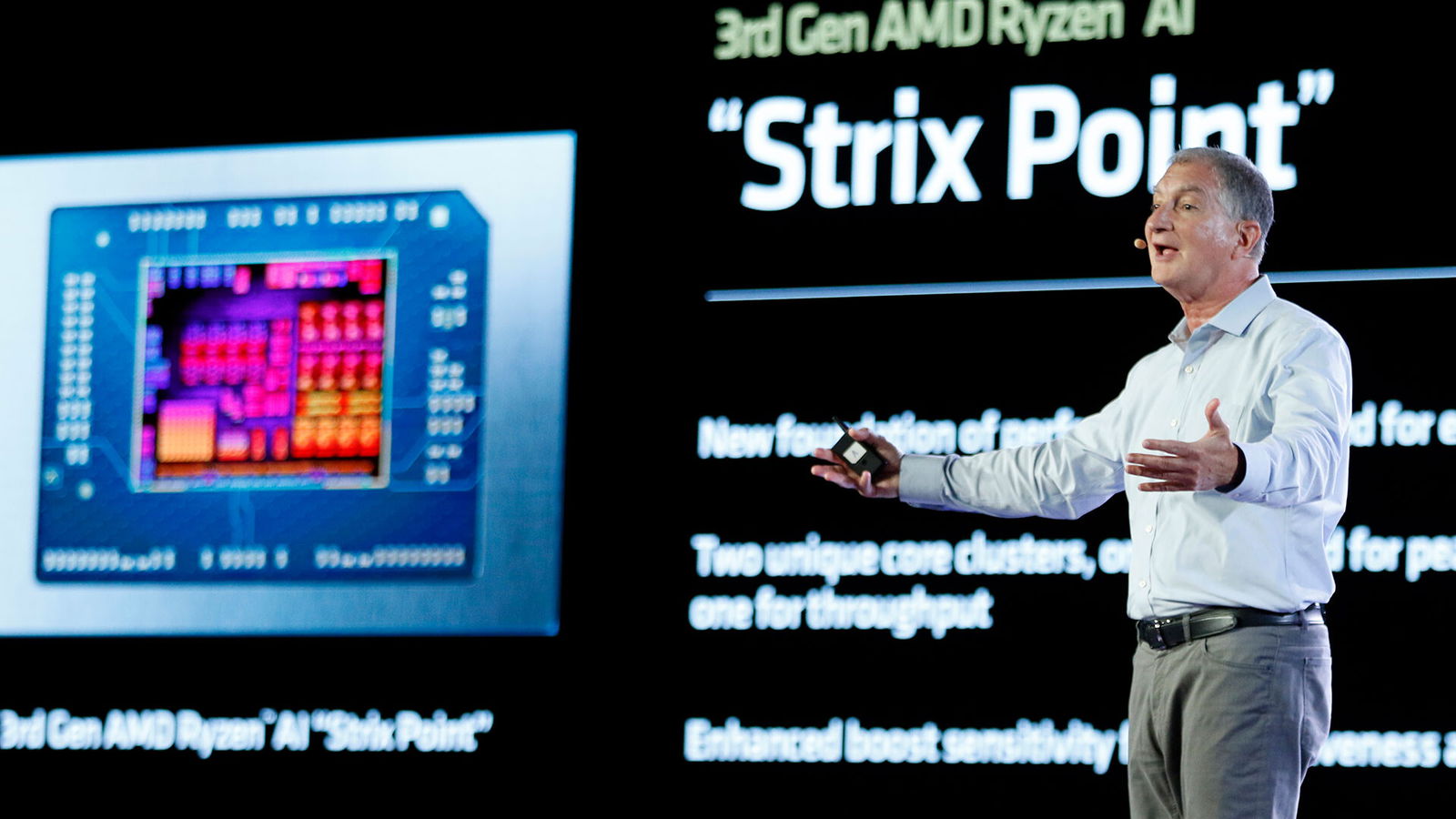
While we still do not have firm benchmarks from Intel’s newer Lunar Lake, compared to Meteor Lake and Snapdragon X Elite, AMD’s new range is looking to deliver a more performative offering that, at least on paper, could be a force to be reckoned with once the laptops ship later this summer. Codenamed Strix Point, this new low-power CPU sees improvements across the board that look to deliver a well-rounded laptop chip that can take on a range of tasks, including gaming, productivity, creative workflows, and even local AI.
While it still is not made to compete with a full-powered desktop PC, the new Ryzen AI Strix Point chips boast an improved GPU, CPU, and NPU, all working together to provide a complete experience ready to take on emergent workflows. They also deliver impressive battery life and allow laptops to be thinner and lighter than ever.
“Boasting 50 TOPS (Trillion Operations Per Second), the new Ryzen AI 300 is looking very impressive, especially with the improvements made on the NPU side of the chip.”
Built on the new 4nm process, Ryzen AI 300 features RDNA 3.5 graphics, which not only deliver better performance per watt but also manage to keep your battery drain low while offering more ability to take on a range of tasks. These advancements take from what AMD has learned in the mobile space, where low power is the name of the game, and bring them to the laptop space, all while improving the overall performance you hope for from a modern machine.
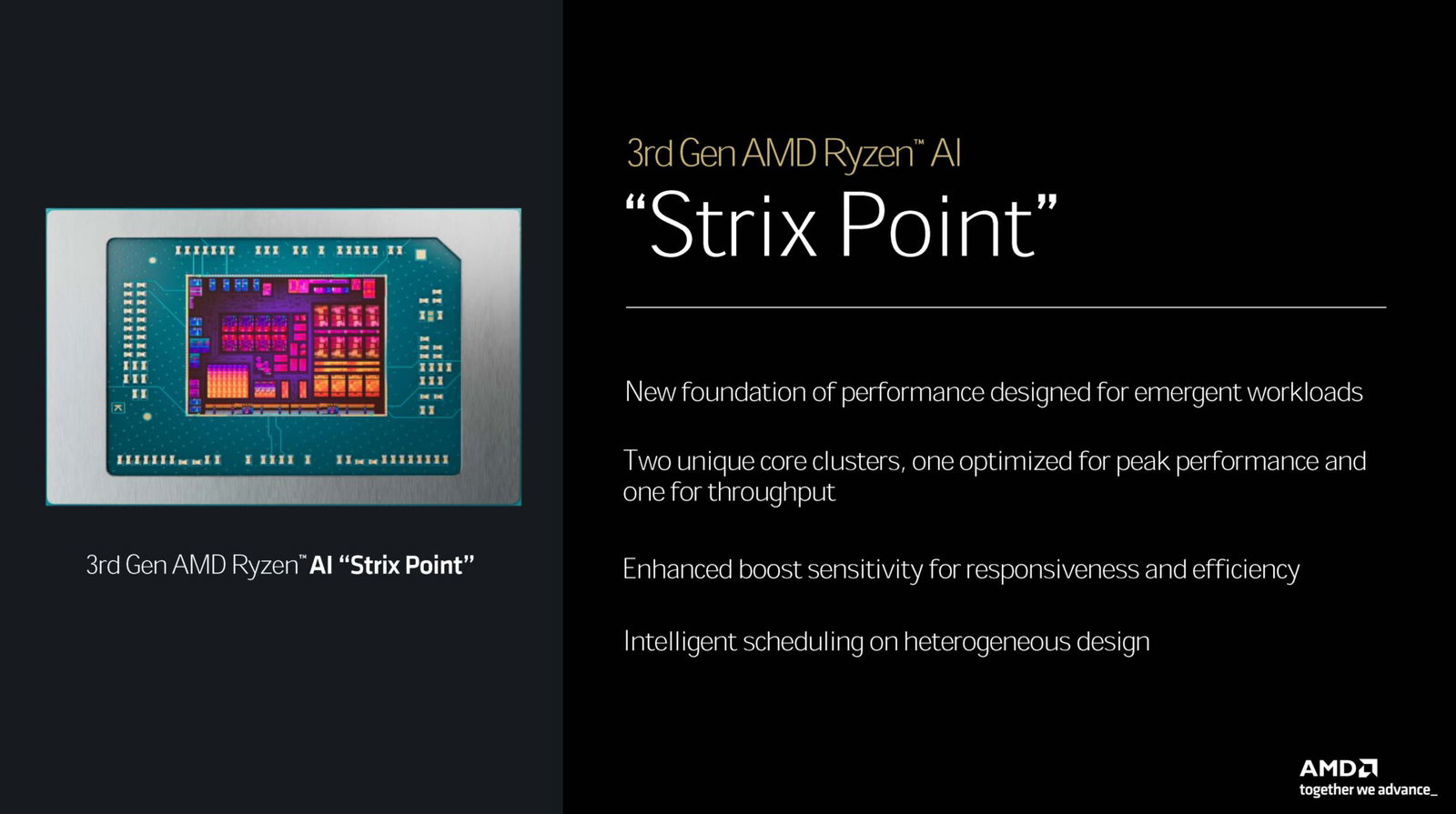
The new Ryzen AI 300 chips also see improvements in a range of creative applications, including DaVinci Resolve, with encoding and decoding also seeing improvements. This makes mobile video editing more performant than ever, and the potential for a laptop that can work and be fast while away from your desktop is something that is no longer a pipe dream. This is possible now and possible on a range of laptops from a range of brands.
AMD boasts that at just 15w, compared to Hawk Point, their last laptop offering, Strix Point saw a 32 percent improvement in 3DMark Timespy and a 19 percent improvement in 3DMark Night Raid benchmarks. This is a major leap, and one that means gaming on a thin and light laptop, even without a discrete GPU, is more possible than ever, with games like Ghosts of Tsushima and Cyberpunk 2077, among others, all delivering 60FPS/1080P gaming at medium settings.
But with this being 2024, AI is where a lot of attention is being placed. With the new Copilot+ PC being the big push, it makes sense AMD would show off how their new chips compare to the competition. Boasting 50 TOPS (Trillion Operations Per Second), the new Ryzen AI 300 is looking very impressive, especially with the improvements made on the NPU side of the chip.
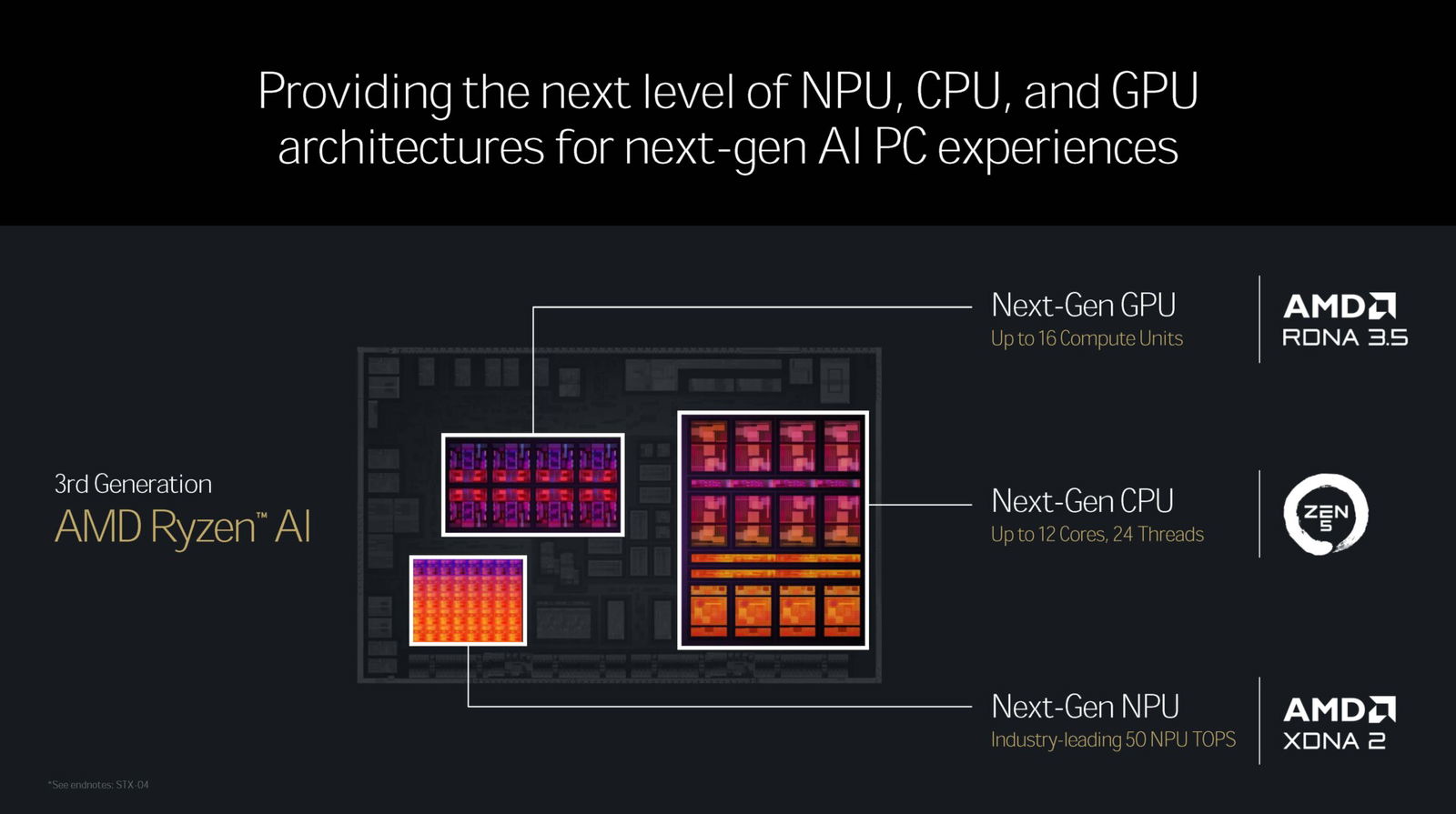
In practice, this means anyone looking to run bleeding-edge models locally can now with their laptop. While you may not be able to push a 30+ billion perimeter Lamma 3 on their laptop, running a 7B is possible, with even some of the latest Stable Diffusion offerings like SDXL Turbo working in a performative way.
“A lot is riding on the new Ryzen AI 300 chips, but if they live up to the benchmarks and performance details, AMD will deliver a strong offering that is ready to take on the competition.”
The new XDNA 2 architecture found in the Strix Point NPU offers a more versatile way to tackle AI workflows and offers up more ways for people to get the most from their new AI PC. Compared to XDNA 1 found in previous AMD chips, it manages to offer 32 AI engine tiles compared to 20 previously. It also now offers block floating point 16 (BFP16) for a more efficient quantization method that delivers a more accurate experience, managing to keep the speed and efficiency compared to the current INT8 offerings, and it delivers that impressive 50 TOPS which means more potential AI power, all while being more efficient than previous offerings.
AMD even brought ASUS out to showcase what they currently do with Ryzen AI. First seen at Computex 2024, the new ASUS laptops take advantage of the strengths of Ryzen AI 300 and offer some of the more impressive and interesting designs that appeal to a range of consumers.
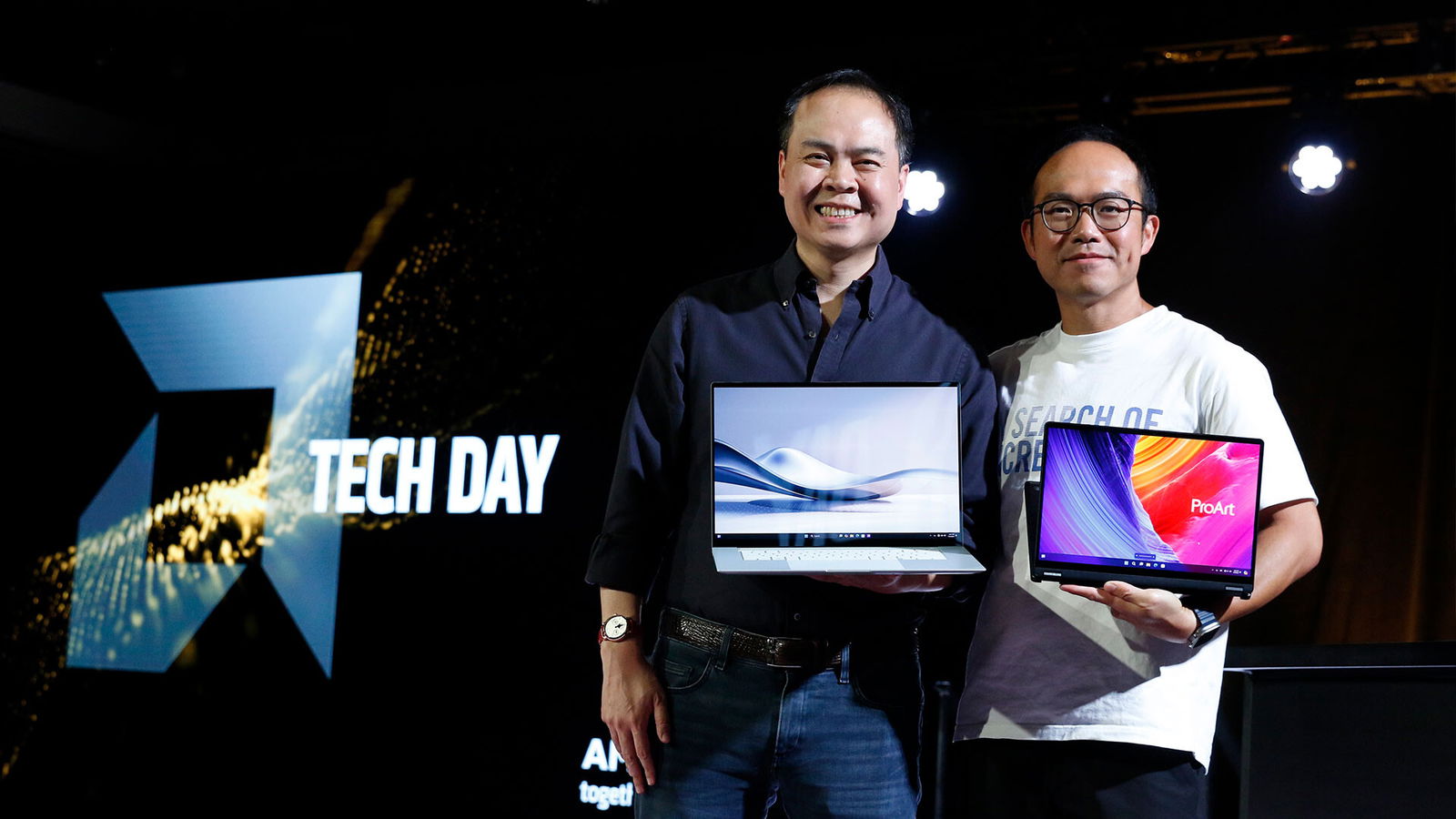
The ProArt range brings the power of the new chips to the creative space, delivering thin and light laptops built for a range of creative workflows, including photo, video and illustration, with their ASUS TUF delivering a gaming machine and a discrete GPU all in a shockingly thin frame. Perhaps the most impressive, the ASUS ZenBook 16 S delivers one of the thinnest and most striking laptops coming to the market this year.
A lot is riding on the new Ryzen AI 300 chips, but if they live up to the benchmarks and performance details, AMD will deliver a strong offering that is ready to take on the competition. With new laptops already announced and more coming later this year, it is an exciting time for anyone looking to make the jump to an AI PC, be it for the potential with the bleeding edge technology or just want the most performance possible in a thin and light design.
With the laptops slowly coming out over the next few months, stay tuned to CGMagazine as we look to bring the new laptops in to put them to the test.
